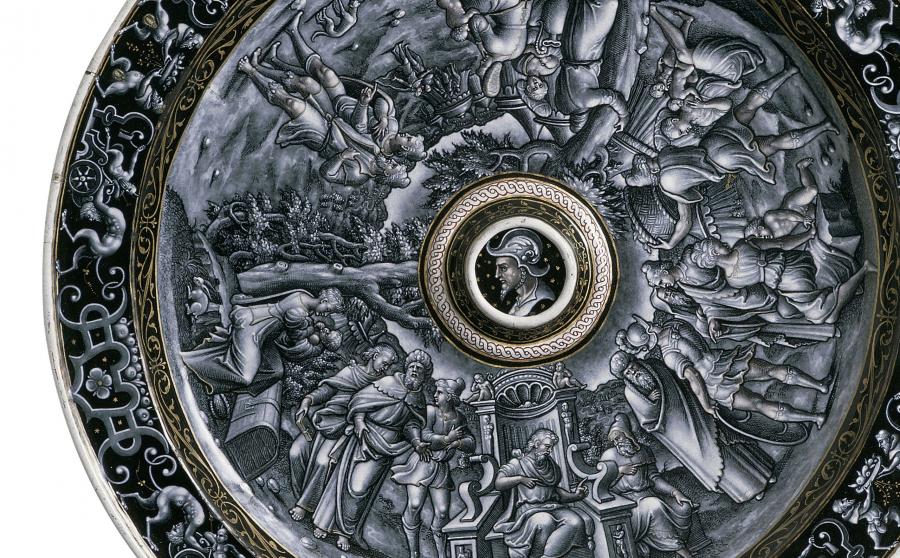Ewer stand, Moses and Jethro
Information sur l’artiste
Pierre Reymond [Limoges, circa 1513 - 1584]

Bassin d'aiguière : Moïse et Jethro, Seconde moitié du XVIe siècle.
Image © Lyon MBA - Photo Alain Basset
This opulent basin would once have served as a stand for an ewer. The initials 'P R', painted on the rim, allow us to identify this work as one by Pierre Reymond, a celebrated Limousin enameller of the Renaissance. The decoration is adapted to fit the shape of the object. The raised centre features a warrior in profile wearing a helmet. The decoration radiating from this central point depicts an episode taken from the Old Testament. Moses, dispensing justice in the desert after the Flight from Egypt, receives advice from his father-in-law, the high priest Jethro (Exodus XVIII). As it is often the case, the subject is inspired by engravings, in this instance by woodcuts with rhymed quatrains by Bernard Salomon entitled Quadrins historiques de la Bible (narrative biblical Quadrins ) following by Quadrins historiques de l'Exode, featuring stories from Exodus, published in Lyon in 1553. Other scenes – also taken from Salomon's engravings – are inserted between the tents of the encampment.
The cheerful décor of the marli stands in contrast with the main scene. Chariots pushed by satyrs alternate with monks with cloven hooves and exaggerated sexual organs carrying food or goblets of wine. This type of anticlerical or Protestant decoration is common in the productions by Pierre Reymond's workshop. The century was indeed deeply marked by the French Wars of Religion.
Limoges, France
Second half of the 16th century
'Grisaille' enamel painted on copper
Dia. 47 cm
Acquired in 1810
Inv. H 459





